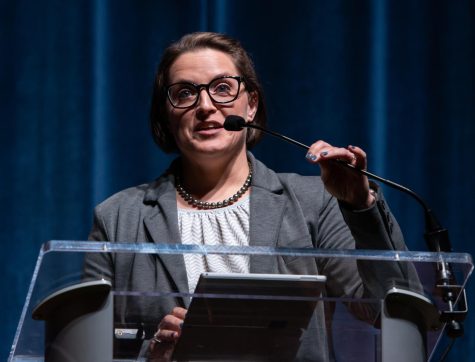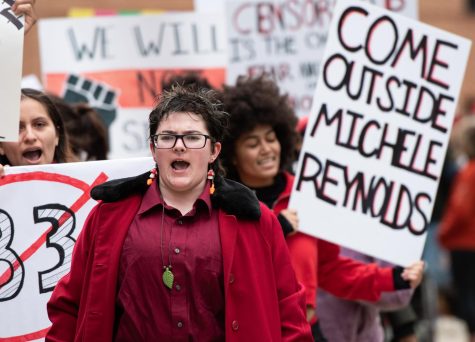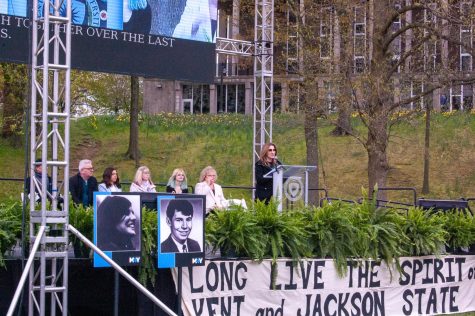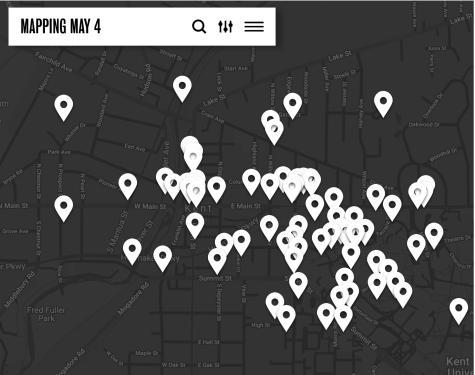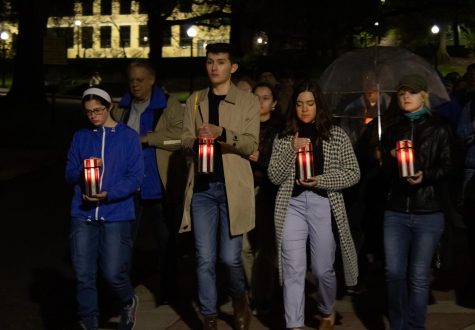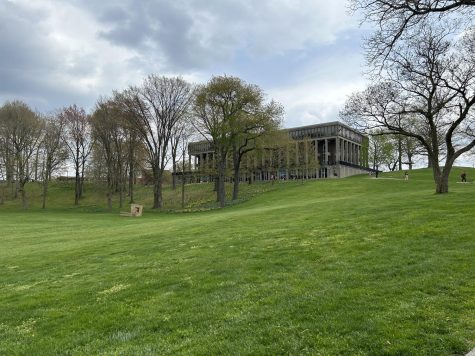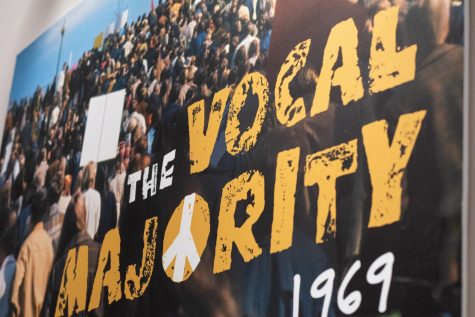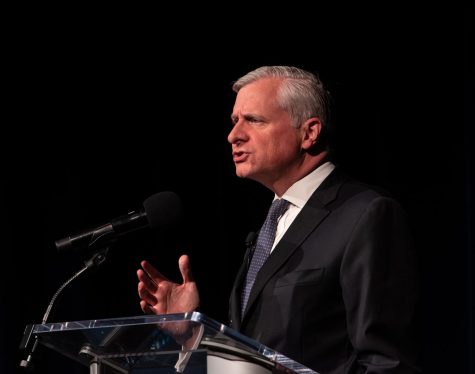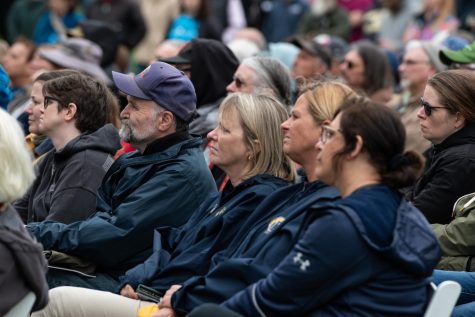Shootings have inspired art across the country
May 4, 2010
Sculptures, plays, songs have come from May 4
Over the course of the past 40 years, the Kent State shootings have influenced countless works of art across many mediums. Many examples can be seen without stepping foot off campus.
Located near Blanket Hill is “The Kent Four” sculpture, designed by former faculty-artist Alastair Granville-Jackson. On display in the May 4 Resource Center in the University Library are four stained-glass windows, made by School of Art alumnus Ted Abel, that show a sunburst in different stages. On the northwest wall of the resource center hangs an oil painting by Ron Kovic, with several messages of peace, change and government resentment, all prominent during the social demonstrations of 1970.
The University Special Collections and Archives has gathered many works of art inspired from the May 4 incident. “Blind Justice,” a collective sculpture set by former Kent State art instructor Henry Halem, can be viewed by special request.
Halem said he was near the end of his first year of teaching art at the time of the shootings. Inspired by the Ravenna grand jury trial following the shootings, Halem created “Blind Justice” by creating separate sculptures of different materials such as bronze, fiberglass and ceramic, each depicting faces of members of the grand jury.
“I had been doing social commentary art since Vietnam,” said Halem, who has also created work based on the Kennedy assassination, Sept. 11 and the Iraq War. “To make art based on those events, there needs to be some kind of emotional connection.”
Halem said “Blind Justice” isn’t his only creation inspired by May 4.
“I think some of the greatest art was the natural outpouring of emotion from around the world,” Halem said.
Collecting letters and telegrams sent from around the world as well as many of John Filo’s infamous photographs, Halem, along with a few colleagues, put together an exhibition in New York City, displaying the highly emotional and opinionated viewpoints of that time.
This year, two new theatrical performances based on May 4 debuted in the Music and Speech Center. In March, “Blanket Hill” debuted, giving a minute-by-minute interpretation of the shootings while using dialogue found in the trial transcripts. On Sunday, the “May 4 Voices Play,” scripted from many personal testimonies of people connected to the event, held its first and only performance.
“Theatre presents, and you be the judge,” said Kay Cosgriff, director of “Blanket Hill.” “You can take something like May 4, 1970, and make it entertaining because that’s how theatre is intended to be.”
The Wick Poetry Center is hosting an open poetry reading for anyone wanting to share their poems and reflections about May 4 at 8 p.m. today at Last Exit Books on Main Street.
“Poetry and the work of poetry is often about recovery, finding a voice to speak about what’s painful or to convert loss into a kind of gain through art,” said David Hassler, Wick Poetry Center director.
Hassler said that in 1990, then- Wick Poetry Center Director Maggie Anderson organized a gathering of poets for the 20th anniversary commemoration. Over a three-day period, poets from all over the country came and read poems. Many of these poems have been organized into the book “A Gathering of Poets,” published by The Kent State University Press.
These examples barely touch the surface of the many works inspired by the May 4 shootings. Musical artists ranging from Bruce Springsteen to underground rapper Sage Francis have reacted to the event in song. There are several films that discuss the topic, ranging from the comic book “The Watchmen” to the numerous documentaries analyzing the shootings.
Searching for art inspired by what happened on May 4 isn’t a difficult task; there are works for anyone’s forte.
“It depends what you consider art,” Halem said.
Contact performing arts reporter Kyle McDonald












